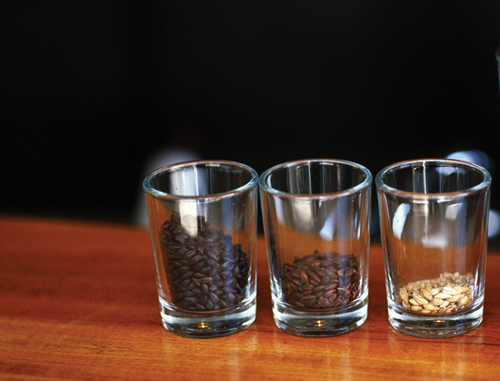
Have you ever had a beer with a smoky aroma? Such beer goes very well with sausage, smoked salmon and recipes with bacon. But how, then, does smoky beer get that aroma?
The answer is in the kind of malt a brewer uses. Why does the brewer use malt that’s been smoked? That’s actually the prerogative of the brewer; let’s get down to the process itself.
When barley or wheat is made to germinate, enzymes are created that break down the starches into sugar. If it is allowed to continue germinating, those sugars are consumed in the maturation of the embryo, culminating in a seedling—we don’t want that. Therefore, the germination must be halted at a certain point. These days germination is halted at an ideal point through the use of a special “kiln-drying” process. In the old days, however, that technology did not exist and germination could only be halted by drying out the malt on a rooftop, for example, through the help of the wind and the sun, or by utilizing fire. With fire, some mesh was placed in an oven and the malt was spread around. The fire was kept going at an appropriate distance from below. The germination would stop and the result sometimes was… you guessed it: smoked malt. So basically, in the old days, brewers could only use wind-dried malt and smoked malt.
Among the more representative beers in this style is the “Alaskan Smoked Porter,” made by Alaskan Brewing Company in the U.S., or Rauchbier, a traditional smoky beer from Bamberg, Germany. In Japan, Fujizakura Kogen Beer in Yamanashi prefecture makes a “Rauch” as well as a seasonal “Rauchboch” and “Forest Weizen” (smoky weizen). Meanwhile, Ise Kadoya Beer in Mie prefecture makes a seasonal “Imperial Smoked Porter.” If you are ever in a restaurant or pub and spot a smoky beer, definitely try it out with some smoky food!
by Kido Hirotaka
This article was published in Japan Beer Times # () and is among the limited content available online. Order your copy through our online shop or download the digital version from the iTunes store to access the full contents of this issue.
